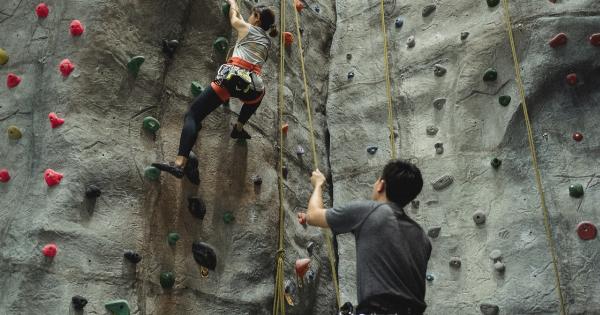Sleep apnea is a sleep disorder characterized by pauses in breathing during sleep, resulting in disrupted sleep patterns and decreased oxygen levels in the body.
This condition can have various negative effects on an individual’s overall health and well-being. While there are different treatment options available for sleep apnea, one approach that has shown promising results in reducing symptoms is moderate exercise.
Understanding Sleep Apnea
Before delving into the effects of exercise on sleep apnea, it is important to understand the nature of this condition. Sleep apnea occurs when the muscles in the throat fail to keep the airway open, leading to repeated interruptions in breathing.
These interruptions can last for a few seconds to a couple of minutes and can occur multiple times throughout the night. The most common type of sleep apnea is obstructive sleep apnea (OSA), and it is often associated with obesity and excess weight.
The Connection Between Exercise and Sleep Apnea
Research has suggested a strong link between exercise and improvements in sleep apnea symptoms. Engaging in moderate exercise on a regular basis has been shown to help in weight management, which can contribute to reducing the severity of sleep apnea.
Obesity is a significant risk factor for OSA, and losing weight has been associated with decreased symptoms and even the resolution of sleep apnea in some cases.
How Exercise Helps Reduce Sleep Apnea
Exercise offers several benefits that can directly contribute to reducing the symptoms of sleep apnea. Here are a few ways in which exercise can help:.
1. Weight Management
Regular exercise plays a crucial role in weight management and can help individuals achieve and maintain a healthy weight. Losing excess weight can relieve the pressure on the airway, reducing the likelihood of obstructions during sleep.
Studies have shown that even a modest weight loss of 10% can lead to a significant improvement in sleep apnea symptoms.
2. Strengthening Upper Airway Muscles
Exercise, particularly exercises that target the muscles in the throat and mouth, can help strengthen the upper airway muscles. Stronger muscles are more likely to keep the airway open during sleep and decrease the occurrence of breathing interruptions.
Incorporating exercises that focus on the tongue, soft palate, and jaw into a workout routine can be beneficial for individuals with sleep apnea.
3. Enhancing Sleep Quality
Regular exercise has been proven to enhance the quality of sleep. It can help individuals fall asleep faster, achieve deeper sleep stages, and improve overall sleep duration.
By optimizing sleep quality, exercise indirectly contributes to reducing sleep apnea symptoms, as the severity of interruptions in breathing can be diminished.
4. Alleviating Stress and Anxiety
Stress and anxiety can exacerbate sleep apnea symptoms and disrupt sleep patterns. Exercise acts as a natural stress-reliever and helps in reducing anxiety levels.
Engaging in physical activity releases endorphins, which are known to boost mood and promote relaxation. By reducing stress and anxiety, exercise can lead to improved sleep and potentially alleviate sleep apnea symptoms.
Recommended Exercises for Sleep Apnea
While any form of exercise is beneficial for overall health, certain types of physical activities may have a more direct impact on reducing sleep apnea symptoms. Here are some exercises that can be particularly helpful:.
1. Aerobic Exercises
Aerobic exercises, such as brisk walking, jogging, swimming, or cycling, are great for weight management and improving cardiovascular health. These exercises increase heart rate and breathing, promoting calorie burn and overall fitness.
Aim for at least 150 minutes of moderate-intensity aerobic exercise every week.
2. Strength Training
Strength training exercises involve working against resistance to build muscle strength and endurance. These exercises can help strengthen the upper airway muscles, reducing the likelihood of airway collapse during sleep.
Include exercises that target the neck, jaw, and tongue muscles, such as neck presses, tongue curls, and jaw exercises.
3. Yoga and Breathing Exercises
Yoga and breathing exercises can improve breathing patterns and help individuals with sleep apnea practice better breath control.
Certain yoga postures, such as the Cobra pose or the Bridge pose, can specifically target the muscles in the throat and promote a more open airway. Additionally, deep breathing exercises, such as diaphragmatic breathing, can help relax the body and reduce stress levels.
Consulting with a Healthcare Professional
Prior to starting any exercise program, it is essential to consult with a healthcare professional, especially if you have been diagnosed with sleep apnea.
They can provide personalized recommendations based on your specific condition, overall health, and fitness level. In some cases, they may suggest a combination of exercise and other treatments, such as continuous positive airway pressure (CPAP) therapy or oral appliances, for optimal results.
Conclusion
Moderate exercise can play a significant role in reducing the symptoms of sleep apnea.
By promoting weight management, strengthening upper airway muscles, enhancing sleep quality, and alleviating stress and anxiety, exercise can contribute to alleviating the severity of interruptions in breathing during sleep. Incorporating recommended exercises into a regular workout routine, in consultation with a healthcare professional, can help individuals with sleep apnea experience improved sleep and overall well-being.






























